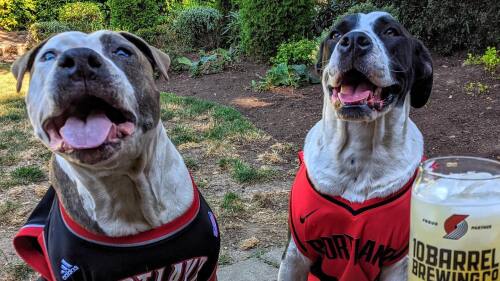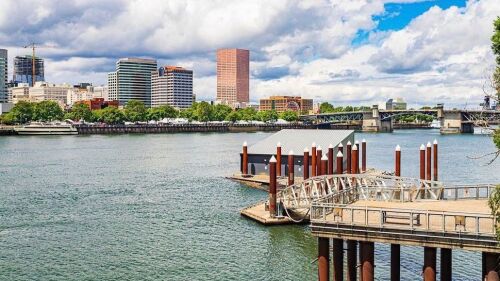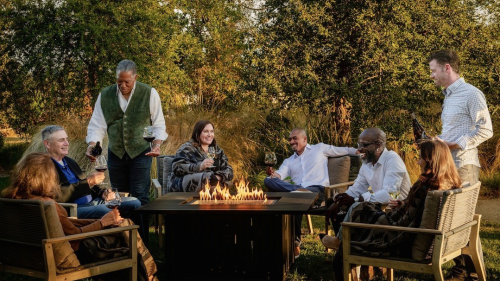For this year’s Endangered Species Day, so we caught up with Amy Cutting — the Oregon Zoo’s interim deputy director of animal care and conservation — to learn more about the zoo’s work to protect animals here at home + around the globe.
The Oregon Zoo, nestled in Portland’s West Hills, has been involved in species conservation since its early days, championing programs for exotic animals like polar bears and elephants. But for the past two decades, the zoo has also been strengthening its focus on species that live in our own backyards, like the western pond turtle.
Amy said biologists noticed that these small, long-lived turtles were being eaten by invasive predators, like bullfrogs, so the zoo teamed up with regional agencies to boost turtle numbers through a “head-start” program — essentially raising tiny, quarter-sized hatchlings until they’re big enough to no longer be easy snacks. The zoo then releases them back into the wild.
“We’ve introduced thousands of western pond turtles in the last couple of decades and we’re seeing those populations rebound in those areas,” said Amy. “There still could be a lot of habitat improvement, a lot of predator mitigation, but we’re really seeing those animals come back from the brink.”
That initial collaboration was the zoo’s springboard to developing more relationships with local partners. Recovery work began for other imperiled PNW species, like Columbia Basin pygmy rabbits, Oregon spotted frogs, Oregon silverspot butterflies, and Northern leopard frogs. In nature, just 10-20 Northern leopard frogs make it to adulthood from each egg mass of about 100 eggs — but Amy said the zoo’s recovery efforts (similar to the turtle program) ensure about 90-95% survivorship.
One of the zoo’s most significant contributions to endangered species conservation is its California condor recovery program. These incredible birds with 10-ft wingspans once ranged from British Columbia to Baja California and east to the Rocky Mountains, but a cocktail of environmental pressures drove them to the brink of extinction by the mid-1900s.
The last 22 wild condors were taken into captivity to form the foundation of what would become a wildly successful recovery program.
Located in rural Clackamas County, the Oregon Zoo’s Jonsson Center for Wildlife Conservation spans 52 acres and is designed to hatch + rear condors with the goal of eventually releasing them to fly free in the skies over California and Arizona. More than 108 chicks have hatched at the center since 2003, and more than 73 have gone out to field pens for release.
“We currently have a record-setting 12 chicks,” said Amy, “and those animals are being parent-reared by animals that are off exhibit, off display, learning how to be condors, and they’ll be reintroduced to the wild over the next year-and-a-half.”
Conservation science initiatives
Reintroducing animals into the wild isn’t the only way the Oregon Zoo is helping with species recovery.
For example, the zoo doesn’t raise and release polar bears, but there’s still a lot that happens behind the scenes. In the past, polar bears at the zoo helped researchers advance tracking collar technology that was used to monitor wild polar bears, leading to a better understanding of their behavior, the impacts of climate change, and how to protect them.
There’s also the zoo’s connection with critically endangered orangutans.
“We have some connections with folks in Borneo who care for orphaned and ill orangutans actually out in preserves in the environment,” said Amy. “And we’ve sent some of our keepers over there to help the staff there to provide better care and welfare and training for those animals. So sometimes you may not have an absolute direct connection with conservation, but we try to be as available as we can to help people develop skills to manage wildlife and protect wildlife in their home countries.”
What we can do
The concept of protecting an entire species can seem like an overwhelming battle that the average person just isn’t equipped to fight, but there’s actually a lot that each of us can do to help — and it doesn’t mean changing careers to become a biologist or a lawmaker.
If you think you have a threatened or endangered species on your property, Amy suggested contacting state wildlife agencies like the Oregon Department of Fish and Wildlife or the Washington Department of Fish and Wildlife to get advice on how to manage the land in a way that protects + encourages those animals.
For native reptiles and amphibians, preserving local waterways is key.
“If you want to protect those kinds of wildlife, you can think about things like reducing pesticide use, reducing water consumption,” Amy said. “Think about how local construction projects or other things are impacting our native waterways — what we all really need to do is be thinking about how to live in harmony and create a diverse habitat and protect some of those wetlands and those sorts of things that are in our neighborhoods.”
When it comes to more exotic species, mindful consumerism is an important step. For instance, Amy said the zoo encourages people to look for products that are specifically made with “sustainable palm oil” in the list of ingredients. This helps preserve rainforest habitats where animals like orangutans live.
And if you don’t already follow the Oregon Zoo on social media, you’re in for a treat: educating and motivating people is one of the zoo’s biggest goals, and they do it in a way that’s fun, often very punny, and always insightful.
“One of our mottos is small things matter, right, small actions matter, small contributions matter,” Amy said. “We’re also asking people to start thinking about themselves as advocates too. If you want to see a different future, if you want to see climate change addressed, if you want to see more sustainable building practices, if you want to see things that are going to make a better future for wildlife and for humans and your kids, then take some of those steps. Get involved, find out what those different initiatives are. They’re not all going to be through the zoo or directed by the zoo, but we hope that we can bring them into people’s attention and get them excited and inspired to take action on their own.”














